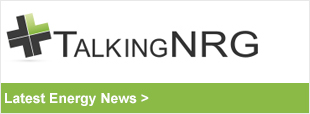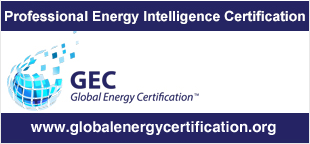Below is the Table of Contents for NRG Expert’s Global Wind Energy Industry (2018) report. We have researched the wind electricity market to produce an in-depth database and accompanying market research report that focuses on the generation through the use of wind technology. The report and database combine NRG Expert’s research abilities with a keen understanding of the power generation landscape to give you a comprehensive look at the sector.
>> Download the Wind Energy Report Brochure
>> Go Back to the Product Overview
-
Executive Summary
- Wind Power Development
- Renewables Subsidies
- Turbine Technology
-
The Market for Wind power
- An Assessment of Factors Affecting Wind Power
-
Terminology
- Variations of Demand
- Base Load
- Peak Load
- Intermediate Load
- Intermittency and Variability
- Capacity Factor
- Loss of Load Probability (LOLP)
- Capacity Credit
- Spinning Reserve
-
Issues for Wind Power
- Grid Balancing
- Grid Extension
- Storage
- Capacity Credit
- Mismatch of Supply and Demand
- Load Following
- Dispersion
- Inadequacy of Weather Forecasting
- Spinning Reserve/Back-up
- Wake Effects
-
The Way Forward
- Investing in the Future Competitiveness of the EU Wind Energy Industry
- Adopting a More Strategic, Coordinated Approach to Offshore Developments
- Maximising the Environmental Benefits of Offshore Wind
- Integrating Large-Scale Offshore Wind in the Grid of the Future
-
National Policies for Renewable Energy
-
Renewable Energy Targets
- Support Mechanisms for Renewables
- The Evolution of RPS Policy in the United States
-
Comparison of Feed-in Tariffs and RPS
- Investor Confidence, Price, and Policy Cost
- Effectiveness
- Ownership Structure
- Conclusion
- Feed-in Tariffs in the United States
-
Renewable Energy Targets
-
National Wind Power Markets and Support Plans; Major Markets
-
China
- Wind Resources
- Barriers to growth
- Offshore Wind Power
-
United States
- The Start of Wind Power
- Market Potential
- Intermittency
- Low-Speed Wind Technology
- Cost of Wind Energy Generation
- Technology Development in the USA
- Understanding Turbulent Wind Patterns
- R&D
-
Germany
- Market Size and Forecast
- Repowering Trend
- Government Support and R&D in Germany
- Stromeinspeisungsgesetz – Electricity Feed Law (EFL)
-
China
-
Wind Industry Supply Chain
- Vertical Integration
-
Background to the Supply Chain in the Electro-Technical Industry
- Raw Materials
- Lead Times
- Wind Turbine Production Capacity
- Local Supply Chains
- Rare Earth Metals
- Operation and Maintenance (O&M)
-
Energy Storage
- Mechanical Storage
- Electrochemical Storage
- Electromagnetic Storage
- Coupling to New Energies
- Advantages and Disadvantages of Wind Energy Compared with Other Forms of Energy
-
Offshore Wind Power
-
The Benefits
- Higher Wind Speeds
- More Stable Winds
- Huge Offshore Wind Resources
- Low Surface Roughness: Cheaper Turbines
- Lower Turbulence: Longer Lifetime
- Shipping and Transport
- Closer to Demand Centres
- NIMBY
-
The Challenges
- Installation Vessels
- Operation and Maintenance
- Port Facilities
- Subsea Cabling
- A European Offshore Grid
-
The Benefits
-
Repowering
- Market for Old Turbines
- Recycling Turbines
- Forecasting a new technology – Experience Curves and Progress Ratios (PR)
Figures
- Figure 1 – Base, Intermediate and Peak Load by time of Day
- Figure 2 – Capacity factors by month for wind power for Denmark, Sweden, Germany, and Netherlands
- Figure 3 – Wind Energy Investments in the EU, 2000 to 2030
- Figure 4 – Distribution of wind turbines in China
- Figure 5 – Potential output of 1.5 MW wind turbines in China, % of maximum output over time
- Figure 6 – Offshore Wind Potential along China’s East Coast
- Figure 7 – Wind Resources in the Great Lakes
- Figure 8 –US Annual Average Wind Speed at 80m
- Figure 9 – Advanced tower design
- Figure 10 – Annual onshore and offshore build and repowering in Germany, MW, 1993 to 2030
- Figure 11 – Cumulative installed capacity, onshore and offshore in Germany, MW, 1993 to 2030
- Figure 12 – Turbine Parts
- Figure 13 – How much neodymium will the offshore sector need?
- Figure 14 – Lifecycle breakdown of wind energy investment project costs, %
- Figure 15 – Frequency of ‘failure rate’ with increasing operational age
- Figure 16 – Downtime per component failure, days
- Figure 17 – Weak point analysis for wind turbine subassemblies including failure causes
- Figure 18 – Estimated investment costs, EUR per kW
- Figure 19 – Estimated operation and maintenance costs, EUR per kW per annum
- Figure 20 – Levelised Cost of Electricity, EUR cents per kWh
- Figure 21 – Estimated grid parity for wholesale onshore wind, EUR per MWh
- Figure 22 – Estimated grid parity for wholesale onshore wind, EUR per MWh
- Figure 23 – Properties of the three main offshore installation vessels
- Figure 24 – Offshore operating conditions
- Figure 25 – Repowering of the Bassens Windfarm in Lower Saxony, Germany
- Figure 26 – Estimates new annual EU wind energy capacity, GW, 2000 to 2030
- Figure 27 – Price of used turbines compared to the price when new as a percentage
Tables
- Table 1 – Typical capacity factors for different generating technologies
- Table 2 – Energy storage technologies
- Table 3 – Estimated date that grid parity will be reached for on and offshore wind
- Table 4 – Water footprint of different primary energy carriers
- Table 5 – Advantages and disadvantages of different types of renewable energy
- Table 6 – Comparison of onshore and offshore wind technologies
- Table 7 – Suitable ports in Europe for development of offshore wind installations
- Table 8 – Advantages and Disadvantages of Repowering
- Table 9 – Recycling of Wind Turbine Components
- Table 10 – Progress ratios for wind turbines
- Table 11 – Technology characteristics of wind turbines
Price: £1,010.00
Prod. Code: NRGWE3
>> Download the Wind Energy Report Brochure

















